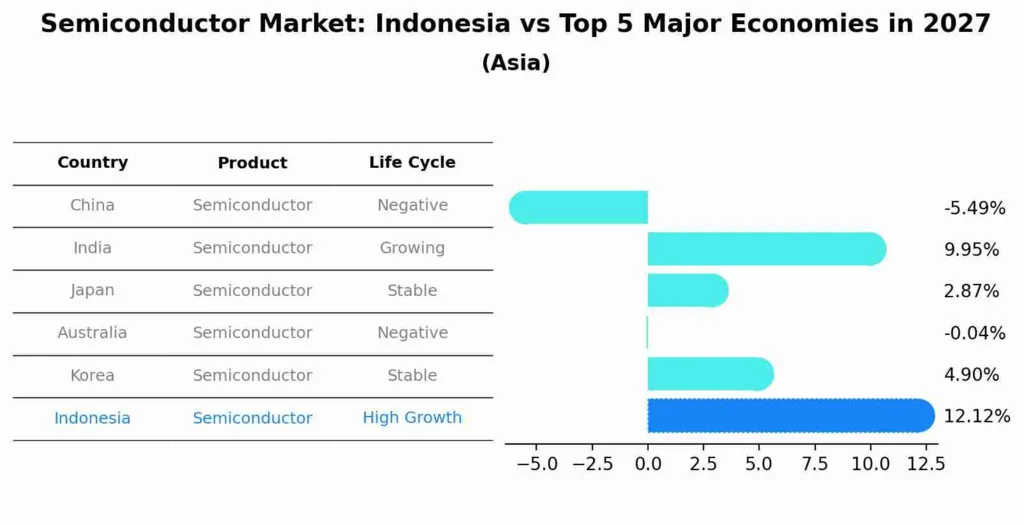As global demand for chips intensifies, Semiconductor Investment in Indonesia is gaining momentum. The country’s semiconductor market is set to reach USD 2.79 billion by 2025, driven by surging use of electronics, smartphones, IoT devices, and smart home technologies.
It's not entirely correct to say this sector is just booming, because it’s essential. Indonesia’s digital economy is projected to hit USD 150 billion by 2025 and USD 600 billion by 2030. That growth demands a steady, localized supply of semiconductors. Recognizing this, the government is pivoting strategically, positioning itself as a key regional player.
The Natural Resource Edge
Few nations can match Indonesia’s 27 billion tons of quartz sand, a vital input for silicon wafer production. This abundance gives the country a natural advantage in developing its own semiconductor supply chain. As a result, reliance on imports is reduced and more opportunities for local processing are created.
By leveraging these raw materials and industrializing their use, Indonesia aims to become ASEAN’s next semiconductor hub.

Read Also: Indonesia Green Energy Investment Hits Solar Gear, Tapping Sunlight
Semiconductor Investment Indonesia: Global Partnerships and Government Incentives
Foreign interest is already strong. Global giants like Samsung, Intel, NXP, and Texas Instruments have made moves in Indonesia, encouraged by supportive government policies and Special Economic Zones like Batam that cater to tech manufacturing.
The U.S. CHIPS and Science Act also signals international support, with the U.S. backing Indonesia’s semiconductor expansion as part of global supply chain diversification efforts.
Indonesia’s ease-of-doing-business reforms, tax incentives, and improved infrastructure are also creating a more attractive environment for long-term semiconductor investment.
Bridging the Skills Gap
Despite momentum, workforce readiness is a hurdle. Skilled labor in the semiconductor space is in short supply. This gap has led to higher operational costs and longer timelines for localization.
To counter this, the Indonesian government is rolling out training and certification programs to build an AI and semiconductor-ready workforce. The aim: to meet international standards and ensure that industrial growth is matched by human capital strength.
Read Also: Upskilling Indonesia’s Construction Workforce with Training
Semiconductor Investment Indonesia and Long-Term Strategic Vision
Indonesia’s Medium-Term Development Plan (2025–2029) identifies semiconductors as one of nine strategic sectors. This includes growing the local semiconductor ecosystem, enhancing supply chain resilience, and driving import substitution to minimize exposure to global disruptions.
The long-term ambition is not just about assembling or testing chips but owning larger pieces of the value chain—from materials to packaging to design.
Rising Regional Relevance
Compared to neighbors like Singapore and Malaysia, Indonesia is catching up quickly. Its 10%+ CAGR in the semiconductor market (2020-2026) reflects serious intent.
As ASEAN’s digital economy is set to grow from USD 1 trillion to USD 2 trillion, Indonesia is targeting a central role. By strengthening semiconductor capabilities, the country aims to support everything from consumer electronics to next-gen cloud infrastructure and autonomous systems.
Semiconductor Investment Indonesia: Ground Zero for the Chip Future
Semiconductor Investment in Indonesia is catching up and is about to shape the future. With the right resources, growing foreign partnerships, and government backing, the country is laying a foundation that could reshape regional chip supply. If Indonesia succeeds in overcoming its talent and infrastructure gaps, it could well become the next big destination for global tech giants looking to build resilience in an uncertain world.







